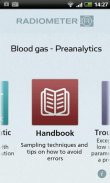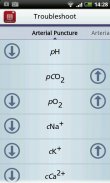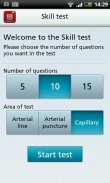






Blood gas - Preanalytics

Description of Blood gas - Preanalytics
Blood gas - Preanalytics
Studies show that preanalytical errors are the reason for 62% of all errors in laboratory medicine [1]. "The diagnostic consequences depend on the magnitude of the preanalytical error. In worst case, these errors may lead to mistreatment of patients; in all cases, these errors are an extra workload for the hospital staff involved" [2].
This app focuses on the preanalytical phase of blood gas testing and what operators can do to avoid errors. The recommendations are based on existing literature and international best practices.
Examples are constructed, unless specific reference is given, with the purpose of illustrating the consequence of preanalytical errors.
The content provided here is owned and maintained by Radiometer Medical ApS, a Danish limited liability company with its registered office at Åkandevej 21, 2700 Brønshøj, Denmark ("Radiometer"). For more information on Radiometer, go to www.radiometer.com.
References
[1] Carraro P et al. Errors in a stat laboratory. Types and frequencies 10 years later. Clin Chem 2007; 53,7: 1338-42.
[2] Wennecke G. Useful tips to avoid preanalytical errors in blood gas testing: electrolytes. www.acutecaretesting.org Oct 2003.
HANDBOOK
The handbook part describes several types of errors that can occur during and after sampling and gives tips on how to avoid such preanalytical errors. As a key feature, the handbook section contains videos showing how to properly collect a blood gas sample by arterial puncture, through an arterial line or by capillary sampling.
TROUBLESHOOTING
Exceptionally high or low values of a given parameter may be due to one or several types of preanalytical errors. The troubleshooting section is a good tool when you are experiencing difficulties evaluating if measured results reflect patient status or if a preanalytical error may have occurred.
SKILL TEST
How good are you at avoiding preanalytical errors in blood gas testing? Test your knowledge about how to avoid preanalytical errors.






















